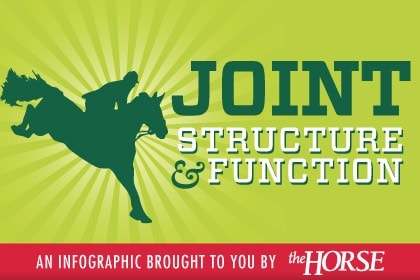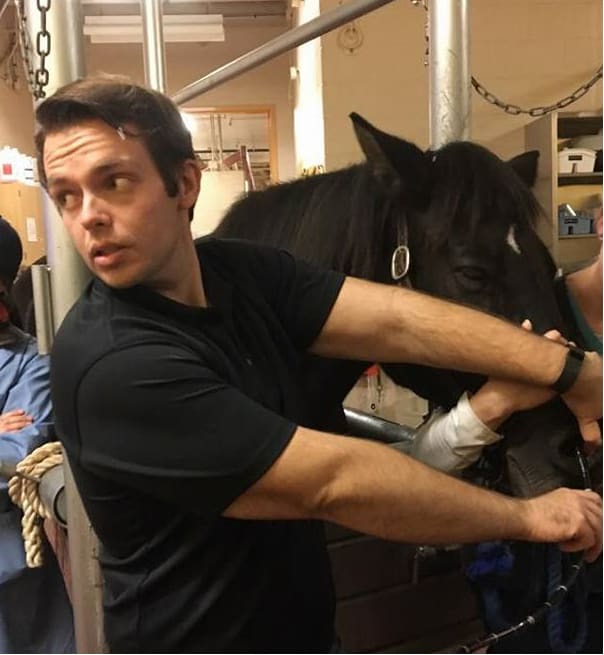What Does it Mean When a Horse’s Hock Is ‘Fused’?

Q. What does it mean for a horse’s hocks to “fuse”?
A. To understand lameness problems in the hock, we first need to understand the joint’s—or more accurately joints’—basic anatomy.
The horse’s hock is like a human’s ankle (notice the direction it flexes) and is made up of four distinct joints: the tarsocrural joint (TSC), the proximal intertarsal joint (PIT), the distal intertarsal joint (DIT), and the tarsometatarsal joint (TMT).
In the horse, we classify joints as being high-motion or low-motion. High-motion joints have a great range of motion and act to flex and extend. These include the carpus (knee), stifle, fetlock, and TSC joint of the hock. Low-motion joints, on the other hand, do not have a great range of motion and work mostly as shock absorption. These include the pastern and the lower two hock joints, the DIT and TMT.
The DIT and the TMT joints are the most common for arthritic change in the horse. Osteoarthritis (OA) can either be a consequence of performance or an age-related process but is always a progressive condition. OA can result in cartilage damage, bony proliferation, and narrowing of the joint space. All these conditions can result in lameness.

Fusion occurs when severe OA results in such bony proliferation that the joint surfaces, thus becoming immobile. Because the DIT and TMT are low-motion joints, they aren’t inhibited by the decreased range of motion that results in fusion. However, to effectively relieve the pain associated with OA, the joint must be completely fused.
Luckily, several methods can speed up the process of hock fusion. After diagnosing your horse with lower hock OA, your veterinarian might recommend a steroid injection to expedite the fusion process. Or, your veterinarian might recommend ethyl alcohol injections, which help deteriorate the joint cartilage completely to promote fusion. Finally, surgical fusion is reserved for severely affected joints. In these cases the horse is put under anesthesia, and the surgeon drills away the cartilage, allowing complete fusion.
For horses with OA, hock fusion is a good thing. It relieves pain and betters the horse’s quality of life. However, it is a long, painful road to fusion, often taking years to completely resolve naturally. If you are concerned about your horse’s hocks, consult your veterinarian to discuss what solutions are right for your horse.

Written by:
Chris White, DVM
Related Articles
Stay on top of the most recent Horse Health news with















